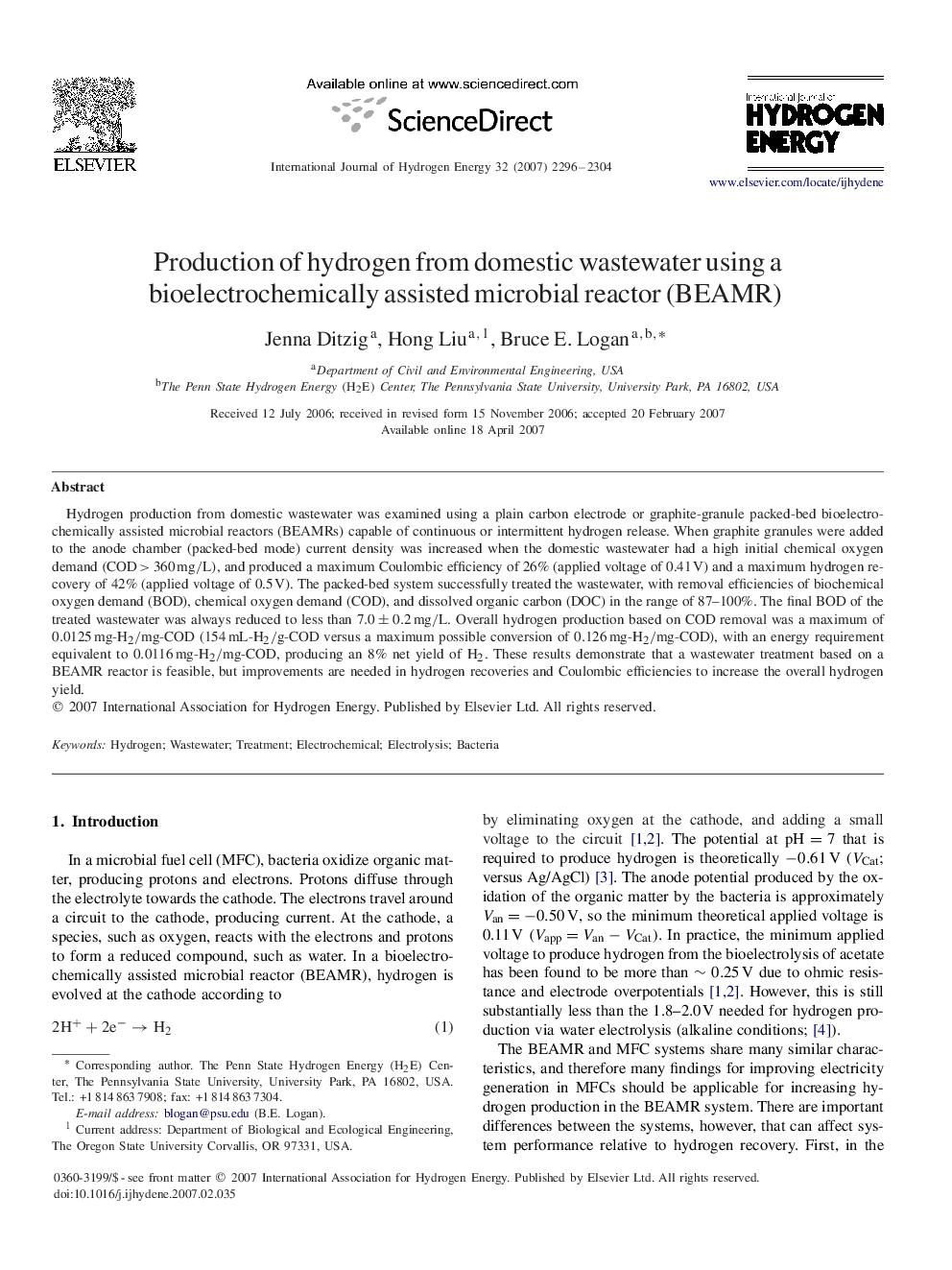| Article ID | Journal | Published Year | Pages | File Type |
|---|---|---|---|---|
| 1280331 | International Journal of Hydrogen Energy | 2007 | 9 Pages |
Hydrogen production from domestic wastewater was examined using a plain carbon electrode or graphite-granule packed-bed bioelectrochemically assisted microbial reactors (BEAMRs) capable of continuous or intermittent hydrogen release. When graphite granules were added to the anode chamber (packed-bed mode) current density was increased when the domestic wastewater had a high initial chemical oxygen demand (COD>360mg/L), and produced a maximum Coulombic efficiency of 26% (applied voltage of 0.41 V) and a maximum hydrogen recovery of 42% (applied voltage of 0.5 V). The packed-bed system successfully treated the wastewater, with removal efficiencies of biochemical oxygen demand (BOD), chemical oxygen demand (COD), and dissolved organic carbon (DOC) in the range of 87–100%. The final BOD of the treated wastewater was always reduced to less than 7.0±0.2mg/L. Overall hydrogen production based on COD removal was a maximum of 0.0125mg-H2/mg-COD (154mL-H2/g-COD versus a maximum possible conversion of 0.126mg-H2/mg-COD), with an energy requirement equivalent to 0.0116mg-H2/mg-COD, producing an 8% net yield of H2H2. These results demonstrate that a wastewater treatment based on a BEAMR reactor is feasible, but improvements are needed in hydrogen recoveries and Coulombic efficiencies to increase the overall hydrogen yield.
